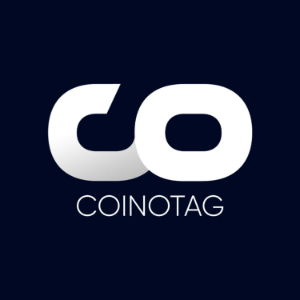BlackRock Bitcoin ETF Achieves Stunning Fee Revenue Victory Over S&P 500 Fund
6 min read
BitcoinWorld BlackRock Bitcoin ETF Achieves Stunning Fee Revenue Victory Over S&P 500 Fund The financial world is abuzz with a remarkable development: BlackRock’s iShares Bitcoin Trust ETF (IBIT) has not only made its mark but has astonishingly surpassed its long-established iShares Core S&P 500 ETF (IVV) in annual fee revenue. This isn’t just a win; it’s a profound statement about the shifting landscape of investment and the undeniable ascent of digital assets. For anyone tracking the pulse of the cryptocurrency market, this news is a powerful indicator of a new era of institutional interest and investor confidence in Bitcoin. How could a fund nearly nine times smaller in assets under management generate more income than its colossal counterpart? Let’s dive into this captivating financial phenomenon. The Astonishing Ascent of BlackRock Bitcoin ETF: A Revenue Revolution It’s a tale of two titans, but with an unexpected twist. On one side, we have BlackRock’s iShares Core S&P 500 ETF (IVV), a behemoth with a staggering amount of assets under management, representing a broad swathe of the American economy. On the other, the relatively nascent BlackRock Bitcoin ETF (IBIT), launched just in January 2024. Yet, despite IVV being nearly nine times larger in assets, IBIT has managed to outshine it where it counts for the fund manager: annual fee revenue. According to Watcher Guru, IBIT, with its 0.25% expense ratio, has generated an estimated $187.2 million in annual fees. Compare this to IVV’s $187.1 million. This razor-thin difference, in favor of IBIT, speaks volumes. It’s a testament not just to the product’s design but to the underlying demand for its core asset – Bitcoin. This remarkable feat underscores the immense profitability potential when a new asset class meets enthusiastic investor adoption, even if the asset base is comparatively smaller. The higher expense ratio, though seemingly modest, compounds significantly when applied to consistent, robust inflows. What Drives IBIT’s Unprecedented Performance? The success of IBIT is not a mere fluke; it’s a reflection of several converging factors that highlight its impressive IBIT performance. The primary driver is unequivocally strong investor demand for Bitcoin exposure through a regulated, accessible vehicle. Here’s a breakdown: Ease of Access: For years, investing in Bitcoin directly presented hurdles for many traditional investors, including concerns about custody, security, and navigating unfamiliar crypto exchanges. ETFs like IBIT remove these barriers, allowing investors to gain exposure to Bitcoin through their existing brokerage accounts, just like buying stocks or traditional ETFs. Institutional Trust: BlackRock, as the world’s largest asset manager, brings an unparalleled level of credibility and trust. Its entry into the Bitcoin ETF space signaled to many institutional and retail investors that Bitcoin was maturing as an asset class, worthy of serious consideration. Consistent Inflows: Since its launch in January 2024, IBIT has seen inflows in 17 of the past 18 months. This consistent accumulation of capital indicates sustained investor interest and confidence, rather than just a fleeting speculative wave. These continuous investments are the lifeblood of an ETF’s revenue generation, directly contributing to its fee income. Market Timing: The launch of spot Bitcoin ETFs coincided with a renewed bullish sentiment in the crypto market, fueled by anticipation of Bitcoin’s halving event and growing macroeconomic stability. This favorable market environment provided a fertile ground for IBIT’s rapid growth. Unlocking Bitcoin Exposure: A New Era for Investors For a long time, gaining Bitcoin exposure was a niche activity, largely confined to crypto-native platforms or complex direct purchases. The advent of spot Bitcoin ETFs, particularly one backed by a financial titan like BlackRock, has democratized access to the world’s leading cryptocurrency. This is a game-changer for several reasons: Diversification Made Easy: Traditional portfolios often seek diversification across various asset classes. Now, with a regulated ETF, investors can easily add Bitcoin to their holdings without the operational complexities of direct crypto ownership. Mainstream Integration: Bitcoin is no longer an exotic, fringe asset. Its inclusion in major investment platforms via ETFs signifies its integration into mainstream finance, making it more palatable for conservative investors and financial advisors. Liquidity and Transparency: ETFs offer superior liquidity compared to direct crypto holdings for many investors, allowing for easier buying and selling. They also provide a layer of transparency and regulatory oversight that can be reassuring. This ease of access is crucial for the continuous flow of capital into products like IBIT, directly impacting the impressive ETF fee revenue we are observing. Beyond AUM: The Significance of ETF Fee Revenue While Assets Under Management (AUM) is often the headline metric for funds, the fee revenue generated by an ETF is arguably more telling about its profitability and the value it brings to the fund manager. The fact that IBIT, with a fraction of IVV’s AUM, can generate comparable fee revenue is a powerful statement. This highlights: High Demand for Specific Exposure: Investors are willing to pay a slightly higher expense ratio for direct, regulated exposure to a high-growth, high-volatility asset like Bitcoin, rather than settling for lower-fee, broader market exposure. Profitability of Niche Markets: Even within a large fund family, a highly sought-after, specialized product can be a significant profit driver, proving that sometimes, quality of demand can outweigh sheer quantity of assets. Future of Fund Management: This trend suggests that asset managers will increasingly look to offer specialized ETFs for emerging asset classes, understanding that even with lower AUM initially, the right product with strong demand can yield substantial returns. This revenue milestone is not just about BlackRock; it’s a bellwether for the entire asset management industry, signaling where future growth and profitability might lie. Paving the Way: Institutional Adoption and Future Prospects The success of IBIT is a clear indicator of growing institutional adoption of Bitcoin. When a player as significant as BlackRock sees such a positive response to its crypto-backed product, it sends a powerful message across the financial landscape. What does this mean for the future? Increased Competition: Other asset managers are likely to double down on their efforts to launch or promote their own crypto-related investment products, leading to more options and potentially lower fees for investors in the long run. Validation of Bitcoin: This level of success from a traditional finance giant further validates Bitcoin as a legitimate and investable asset class, moving it beyond speculative circles into mainstream investment portfolios. Regulatory Clarity: The operational success of these ETFs may encourage regulators to provide clearer guidelines and frameworks for digital assets, fostering a more mature and stable market environment. Innovation in Financial Products: We might see a proliferation of more sophisticated crypto-backed financial products, including options, futures, and even leveraged ETFs, as the market matures and investor appetite grows. The trajectory of IBIT, from its rapid launch to its astonishing revenue generation, serves as a compelling case study for the future of finance, firmly cementing Bitcoin’s place within the institutional investment landscape. What Does This Mean for You, the Investor? The triumph of IBIT in fee revenue offers several actionable insights for both seasoned and novice investors: Consider Diversification: If you haven’t already, explore how a small allocation to Bitcoin via a regulated ETF might fit into your diversified portfolio, considering its potential for growth and its low correlation with traditional assets at times. Evaluate Expense Ratios: While IBIT’s expense ratio is higher than IVV’s, its performance illustrates that sometimes, a slightly higher fee is justified by access to unique market opportunities and strong underlying asset performance. Always weigh the fee against the value and access provided. Stay Informed: The crypto market is dynamic. Keep abreast of new product launches, regulatory changes, and market trends to make informed decisions. Understand Risk: While ETFs mitigate some risks associated with direct crypto ownership, Bitcoin remains a volatile asset. Invest only what you can afford to lose and align your investments with your risk tolerance. A New Dawn for Digital Assets BlackRock’s iShares Bitcoin Trust ETF achieving higher annual fee revenue than its venerable S&P 500 counterpart is more than just a financial statistic; it’s a seismic shift. It signifies the mainstreaming of Bitcoin, the power of institutional trust, and the insatiable investor appetite for digital asset exposure. This remarkable feat underscores a future where digital assets play an increasingly prominent role in diversified investment portfolios, challenging traditional financial paradigms and opening up unprecedented opportunities. The success of IBIT is a powerful testament to Bitcoin’s growing legitimacy and its undeniable place in the future of finance. To learn more about the latest Bitcoin institutional adoption trends, explore our article on key developments shaping Bitcoin’s price action. This post BlackRock Bitcoin ETF Achieves Stunning Fee Revenue Victory Over S&P 500 Fund first appeared on BitcoinWorld and is written by Editorial Team

Source: Bitcoin World



